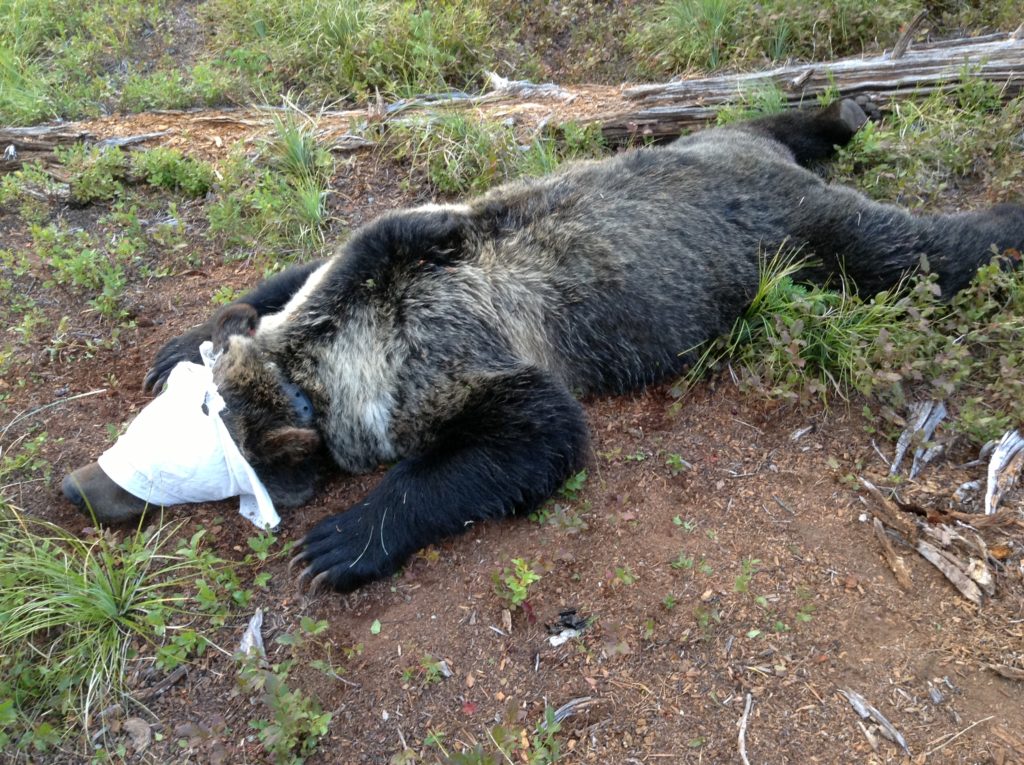Live Capture and Radio-Collaring
Since 1978, nearly 200 different grizzly bears have been captured and fitted with GPS (Global Positioning System) and VHF (Very High Frequency) collars in the Southern half of the Flathead valley. Radio tracking involves fitting the study animal with a radio collar. These collars are designed to minimize impact on the animals’ behaviour and to maximize their detectability. The SRGBP has used two different forms of radio collars on grizzly bears; VHF Collars and GPS Collars.

When placing radio collars on the bears, researchers are also able to gather additional data while they have the bear in hand. Measurements are taken from the bears (i.e. fat %, length, weight, neck size), and a small tissue sample is obtained to aid in genetic identification of individuals.
VHF Collars –In the beginning years of this project, only VHF collars were used on the bears. VHF collars emit a pulsed radio signal which allows the researcher to locate the animal using a receiver and antenna. Bears that had VHF collars on had to be tracked on the ground or by air plane to receive a location.
GPS Collars – In the early 2000s the project switched to mainly GPS collars. GPS collars use a GPS to record the location of the animal and then send this location to researchers via satellite connection. GPS collars allow researchers and managers to collect daily baseline data like home range sizes, daily movements, behavioral data and diet.
Using collars to track bears provides researchers with information on habitat use, daily movements, home ranges, den site locations, and survival of the collared individual. Ground truthing of collar locations can also provide researchers with information on reproduction and causes of mortality.